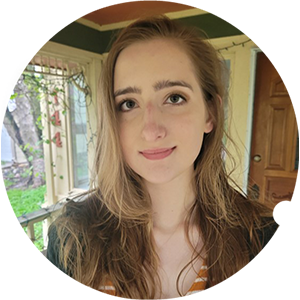Winner of the 2018 Whirling Prize, and North American Review contributor Christine Stewart-Nuñez’s eighth collection, The Poet & The Architect spirals through the intricacies of love–specifically love after separation–and the strength to rebuild and merge. The collection begins with a handful of love poems and masterfully spirals from sensual spaces to the built home of family. Not only do certain poems have geometric structures and play with traditional forms, but they echolocate through the intimate territory of love making and life making.
The first section, Ring One, centers on the euphoria of new love and the contentment of a second marriage after the “gaping hole / divorce left.” The language is botanical, organic, erogenous: “bouquet where stems brush as if thighs,” “his neck’s slope,” a “sonnet’s / fourteen creases in the sheets.” And as the collection progresses, Stewart-Nuñez uses polysemy to entwine the notion of designing poems, buildings, and lives, as in the poem “Palimpsest” that begins, “We lean on the bridge’s bones, spine of rust, ruins / of iron, a picture of life against ruins” and ends with: “My love, the landscape subsumed my past and yours / and left a trace upon which our vows trussed ruins.” Rebuilding a life is central in this collection and the intricacies of a new relationship reframe ideas about marriage, and by Ring Two it’s clear, Stewart-Nuñez is adeptly experimenting with structure. Poems like, “Urban Planning,'' use a circular gap in the stanzas to illustrate an “open cut,” a kind of draft, plans, and maps, gone awry and then gone better–the development and redevelopment in love and construction. The appreciation for the rifted journey closes both the cut and the poem, “We work because we question in love. Fingers against / cheek, it leads where it leads; / we make it urban.”
By Ring Three, the lovers have been established, and their new home with children spirals from the bond. Stewart-Nuñez’s tone becomes playful, LEGOs appear in three poems, and as children enter the poems, so does their wonder and curiosity. In the poem “Playtime,” the speaker describes the way her son builds LEGOs with her husband and the poem employs rhyme and simplifies the act of planning, “Our son’s building style transcends ours; / he starts with an image, then innovates.” Poems flit between these play-spaces of construction to tours of historic and innovative constructions: Chicago’s Big Red, Montreal’s Habitat 67, to a Sullivan’s jewel-box bank in Owatonna, Minnesota.
To read this collection is reminiscent of going on a city tour through cities, but also an accounting of the heart.
Ring Four is as much a tour of historic buildings as it is ghosts of the past, both personal and public. In the poem “Blueprints and Ghosts,” an architect wonders “How close can one get to evil before it tarnishes,” and “if design could help men to do bad better,” “who designed concentration camps and gallows.” The architect is haunted by a cabin he designed the year his daughter was born and later becomes a scene used for sex trafficking. The pandemic enters the family’s sphere, and one son’s seizure disorder is a foil to a younger son's lantern consciousness as he learns about the world. The crescendo of the collection is “Credo,” a poem that uses knowledge of architecture and the miracle moment of pregnancy and birth. The epigraph of the poem is the definition of a fractal, which in the poem becomes the birth of the poet and architect’s son. What are all but fractals of our parents, their DNA now ours, spirals of them into a new creation: “I see them in / architecture, / geometry a welcome language, / shapes a new alphabet for / prayer and song.”
To read this collection is reminiscent of going on a city tour through cities, but also an accounting of the heart. As the speaker examines landscape, homes, and historic buildings, it is really the newness and vulnerability to learn and to choose re-love that circles through these poems. Stewart-Nuñez writes, “I’ve had enough dark / sky in my rear-view mirror.” The structure of this collection gratifies the readers, and at a time when the post-pandemic world faces war, the biggest kind of destruction, this collection affirms resiliency and reconstruction at each hardship.





